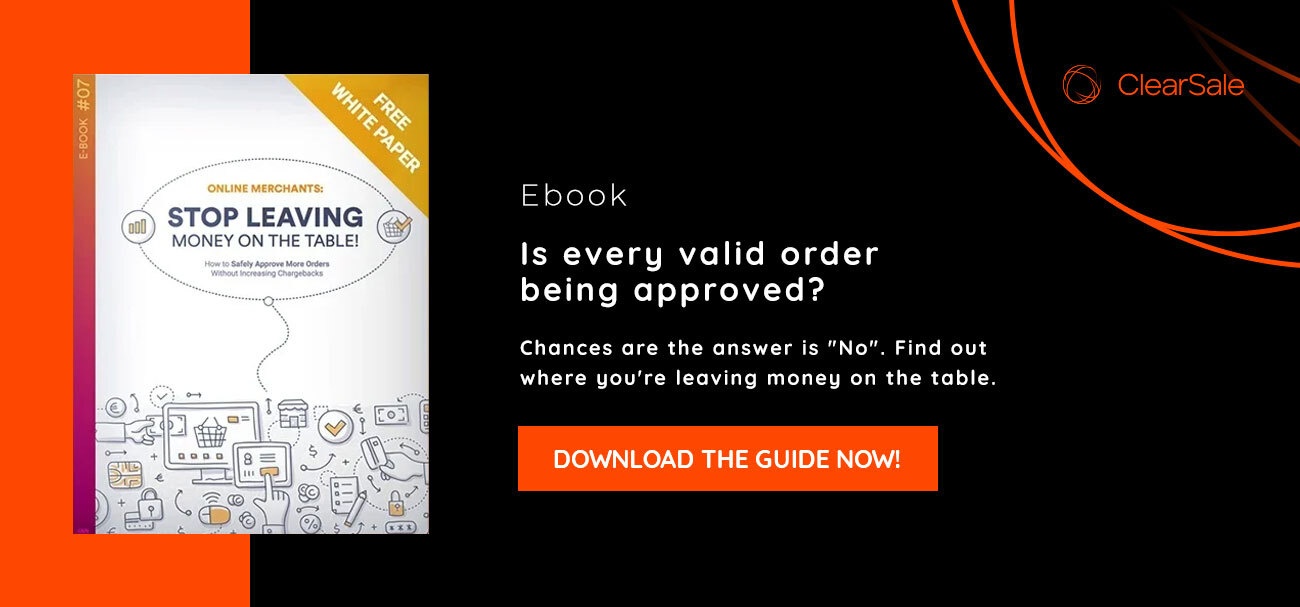Evidence You’ll Need to Dispute a Chargeback
No merchant wants to see a chargeback dispute land in their laps, and with good reason. Not only are they expensive to fight (fees alone can top $75), but card networks tend to rule in the customer’s favor – meaning fighting a chargeback is often a losing battle. But that doesn’t mean it can’t sometimes pay off.
The winning difference? Submitting the right evidence to prove your position.
When you receive a notification that a customer has filed a chargeback dispute, you need to put your strongest foot forward. That means understanding the reason code for the dispute as well as knowing what the card network will expect to receive as evidence.
Disputing a chargeback can be complicated and frustrating if you’re not prepared. To fight a chargeback, your evidence should include:
- Confirmation the customer was on your website.
- Proof the customer intended to make a purchase.
- Documentation showing the product or service was delivered or accessed.
- Proof the cardholder used the product or service.
- Verification of fraudulent behavior patterns.
- Summary of evidence in rebuttal letters.
Let’s explore each of these items in detail.
Confirmation the Customer was on Your Website
Your website and payment gateway should be able to capture the key evidence that will help place the customer at the point of sale. This might include:
- The cardholder’s IP address
- A positive match of the cardholder’s billing address through the address verification system (AVS)
- A confirmed match for the cardholder’s CVV
Proof the Customer Intended to Make a Purchase
If you are tracking cardholders’ IP addresses when they first enter a website, you can use that number to track the customer’s activity across your entire site. For instance, you can document that the customer visited pricing pages, actively searched for the product in question, and spent time reading product reviews — all useful information in a chargeback dispute.
Documentation Showing the Product or Service Was Delivered or Accessed
Merchants selling physical goods should always ship products using delivery confirmation. You might even want to take that a step further by requiring a signature upon delivery.
For retailers selling digital goods or services, you’ll want to have a digital receipt confirming delivery and demonstrating the customer logged in, downloaded, viewed and used a digital order (e.g., computer software, in-game purchases). You should also always require shipping addresses, even if delivery is always virtual. Having the shipping address lets you use AVS to compare billing and shipping addresses. You can even use that address to ship a physical package to the customer that includes download instructions, receipts and other relevant purchasing information. In addition to providing a great customer experience, this also gives you the proof of delivery you need to make it harder for a customer to claim they didn’t receive an order.
Proof the Cardholder Used the Product or Service
Sometimes, it’s not enough to show that the product was delivered to the address provided at checkout. Instead, you might also need to show that the customer used the item they ordered. That might mean submitting screenshots of a customer’s public social media account that shows the disputed goods being used. Or if available, you can submit timestamped posts or recorded videos of the customer flaunting the purchase.
Verification of Fraudulent Behavior Patterns
Fraudsters tend to be repeat offenders when it comes to chargebacks: 40% of customers who successfully file a chargeback will file another one within 60 days. So how might you know when you have a repeat offender on your hands? If your website is capturing the key evidence that proves a fraudster has been on the website before, that information can be used to tie them to previous chargebacks.
Summary of Evidence in Rebuttal Letters
You can bolster your evidence with a well-crafted rebuttal letter that succinctly outlines the facts surrounding the dispute. An effective letter to fight a chargeback will:
- Be short — A rebuttal letter can be less than one page in length.
- Stay objective — Keep emotion out of the letter and focus on the facts.
- Be specific — Address the specific reason code and purchase details and highlight the evidence that invalidates the claim.
With changing chargeback processes such as the new VCR initiative, it’s more important than ever to have processes in place for capturing, storing and retrieving transaction records. And part of the process means being familiar with new evidence guidelines, chargeback reason codes and chargeback processes to increase your chances of success against friendly fraud.
But clearly, you don’t want to spend your time representing chargebacks. Instead, you need a trusted partner who can navigate the chargeback dispute process and, better yet, help prevent chargebacks from happening in the first place.
ClearSale is one of a handful of providers offering a 100% guarantee against the costs of fraudulent chargebacks. We keep current with issuers’ changing guidelines and make sure your business is protected. Contact one of our analysts today to learn why companies worldwide trust us to lead the fight against fraud and chargebacks.
 Bruno Farinelli
Bruno Farinelli
